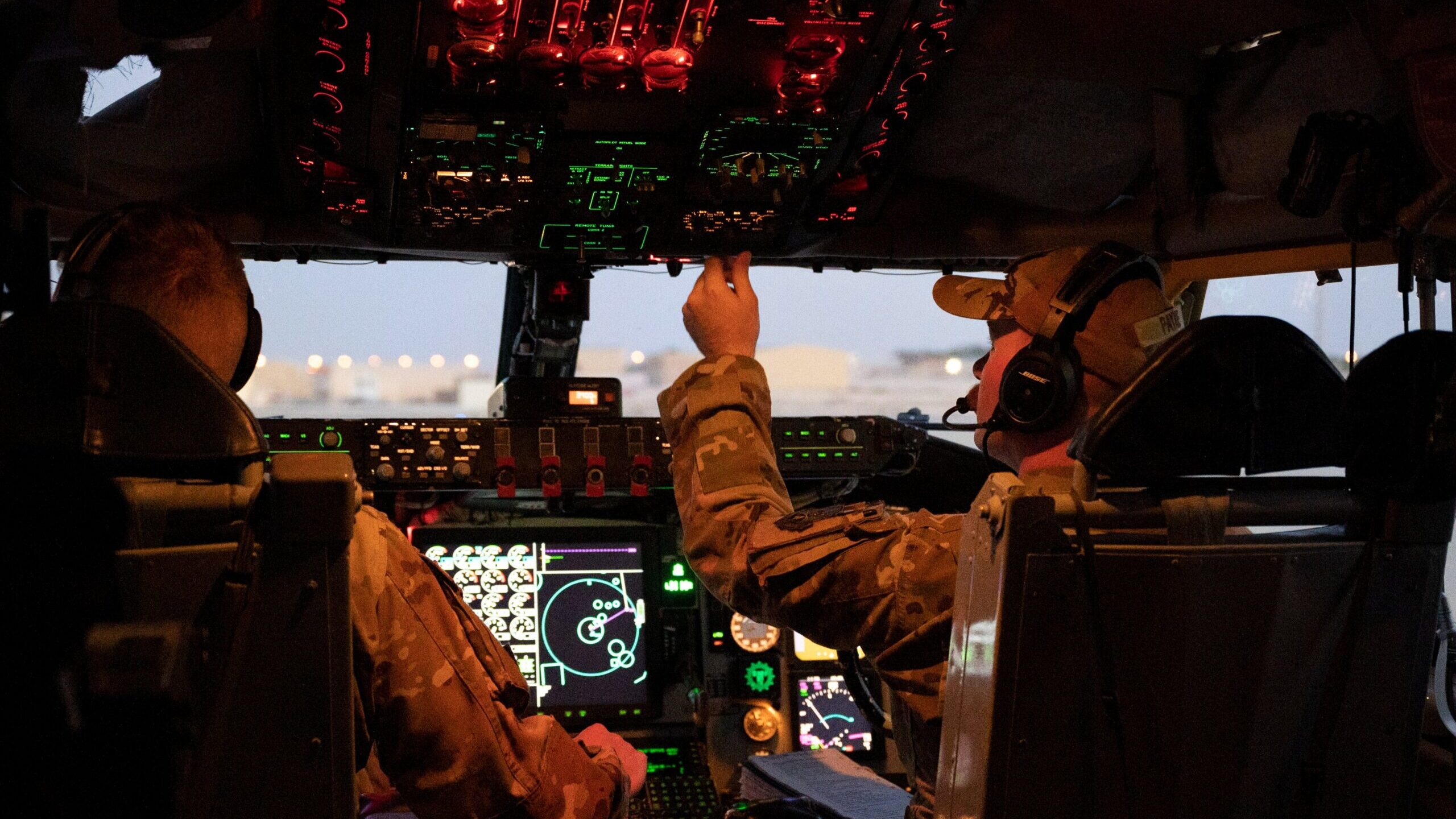SCHUYLER MOORE

A U.S. Air Force B-1 Lancer conducted a mission flying from the UK to the #middleeast to build agility and interoperability between coalition partners and the U.S. (US Central Command)
Officials have long said that in ever-more interconnected military operations, the software that connects people and platforms is quickly becoming as critical as the platforms themselves. In the following op-ed, CENTCOM CTO Schuyler Moore dives into a recent exercise in the Middle East and what it teaches about the future of on-the-fly software development.
This month, U.S. Central Command (CENTCOM) conducted an unusual exercise.
The exercise, Digital Falcon Oasis, brought together a set of capabilities, participants, and processes that foreshadowed the future of digital warfare, and how we might train for that future. The exercise scenario sought to answer a simple, but challenging question: whether the Command could find, prioritize, approve, and neutralize 1,000+ targets that presented a threat to U.S. interests over a 24-hour period.
But alongside the traditional trappings of complex exercises, what really took center stage was the software and, critically, the ability to adapt it on the fly, whether it was supporting civilian intelligence analysts, airmen in the air operations center, or sailors on the maritime watch floor. The mid-exercise software adjustments reflected real-time feedback from participants and capability upgrades in the span of days, or even hours.
The exercise was just the latest evidence for what’s become abundantly clear about modern military operations: Software capabilities alone are necessary, but not sufficient. To make an impact, they must be integrated into exercises and operations, where they can be pressure-tested in realistic scenarios. They must also come with mechanisms to rapidly update based on user feedback. We must learn to adapt and update our tools while we fight, and exercises like Digital Falcon Oasis can provide the proving ground to build that capability and capacity.
Breaking The Fourth Wall
The daily morning briefs provided the first clue that the exercise was unusual.
In addition to traditional updates about operations for the day, the briefings included an “engineering update,” where software developers, service members, and civilian staff reviewed digital tools that would be integrated into operations for the day and highlighted priorities for the software development team to tackle in the coming week.
As the day progressed, team members would continue with their traditional exercise activities, providing briefings to senior stakeholders and executing a series of live-fire events that included a Bomber Task Force dropping live munitions in theater. But after each briefing, the Director of Operations would pause the team: “Time to break the fourth wall,” he’d prompt.
Service members and civilian counterparts would then discuss the digital tools they had just used, where they had met the mark, and where they’d fallen short. Software developers would frantically take notes, injecting themselves on occasion to ask a clarifying question, then retreat to their stations to work on updates that would often be seen within hours.
The exercise often felt like taking part in a multi-course dinner where, after each dish was served, the diners and kitchen staff would get together to discuss how the dish had been made, how the diners had like it, and what could be improved for later courses. The process could feel messy at times, but it was clear at the end that CENTCOM had taken part in a much higher quality dining experience than if participants had stuck with a static menu and dinner service.
“This capability didn’t exist 30 days ago.” Briefing after briefing, team members began with that preface. Team members watched their conceptual conversations with software developers rapidly transform into real software tools that they could use directly in the exercise, then watched those tools improve over the course of days or even hours as they provided feedback to the development team.
Team members learned how to provide critical feedback in terms that software developers understood and could act upon, and sometimes discovered that the problems required policy or process fixes, not technical ones. In turn, software developers became more educated about operator problem sets, discovered where software tools were or were not intuitive for the users, and learned how to integrate into the battle rhythm of an exercise.
This type of event combines software development best practices with the rigor and reality of military exercises. For digital tools that facilitate warfighting capability (such as targeting, air tasking, and operational planning), their development cycles must be anchored to realistic scenarios and testing – without it, developers risk building tools that don’t meet the practical requirements of the warfighter.
Software should not be treated as a static capability, where updates are expected to occur every few years at best. Military exercises provide the proving ground to test, iterate, and update software in the hands of real-world users and scenarios on the order of days or hours.
Digital capability development at CENTCOM will not end with Digital Falcon Oasis. The exercise is part of a quarterly series, and CENTCOM will execute two more Digital Falcon Oasis exercises before the end of 2023 – each building on the software evolutions that came before, and each pushing further toward a truly digital warfighting capability.
Schuyler Moore is the Chief Technology Officer of US Central Command (CENTCOM). She previously served as the Chief Strategy Officer of Task Force 59, US Naval Forces Central Command’s (NAVCENT) unmanned and AI integration organization. Schuyler also has previous experience in Congress, the Office of Under Secretary of Defense for Research & Engineering, and the private sector.
No comments:
Post a Comment